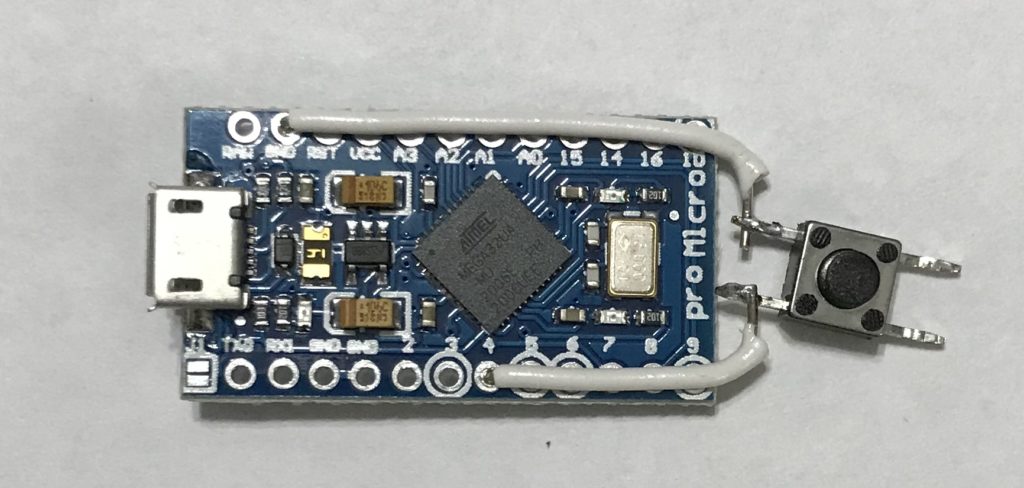1-Click Passwords
I was recently presented with a situation where I would have to regularly enter a 48 random character password for a month or more to log in to a computer that was assigned to me. Given that I couldn’t possibly memorize this string, and the computer is reasonably physically secure, I decided to build a device to do this for me.
I had previously used an Arduino to emulate a gamepad for a homemade Dance Dance Revolution mat. This time, I needed to emulate a keyboard. A search for “HID Arduino” returned the Arduino HID page, which suggested an Arduino with an Atmel 32u4 microcontroller. A search for Arduino 32u4 on Amazon returned the KeeYees Pro Micro clone, which I ordered.

It came in, I soldered a button to I/O 4, and uploaded the following code:
|
|
Now, every morning, instead of copying 48 characters from a Post-it, I just click the button.
It should be said, this defeats the purpose of the password, and the password isn’t stored in a secure way on the microcontroller. But this technique is great for any time you need to automate a sequence of keystrokes.